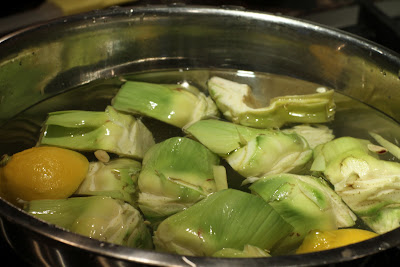5 small beets
Extra-virgin olive oil
1/2 cup quinoa
3 cups well-drained cooked Christmas lima beans (crockpot, stovepot, etc.) warmed slightly
1/2 small sweet onion, thinly sliced
1 avocado
Dressing: 2 Tbsp fresh lemon juice, 1 Tbsp cider vinegar, 1 tsp honey, 1/3 c extra-virgin olive oil, salt & freshly ground pepper. (Vegans: Leave out the honey)
Preheat the oven to 400 F. Scrub the beets and dry them. Put in a medium bowl and drizzle with olive oil. Wrap the beets in 2 separate aluminum foil packages, putting like-sized beets with like-sized beets. Roast until tender, about 45 minutes. When the beets are cool enough to handle, slip off the skins with your fingers. Cut the beets into 1/4 inch thick wedges. Put in a large salad bowl.
Rinse the quinoa under cold running water (the quinoa can be soaked for 4 hours prior to this to remove any inherent bitterness). Bring a medium sauce-pan of generously salted water to a boil. Add the quinoa, reduce the heat to low, and simmer until the quinoa is fluffy but still slightly crunch, 15 to 20 min. Drain and rinse quickly under cool running water. Drain well and add to the beets.
Add the beans and onion to the salad bowl. Cut the avocado in half lengthwise and remove the pit, leaving each half in the skin. Cut each half lengthwise into 1/4 inch-thick-slices. Then cut the slices crosswise into thirds. Using a spoon, scoop the avocado from the skin and add to the bowl. Toss gently.
Make the dressing: In a small bowl, whisk together the lemon juice, vinegar, and honey. Drizzle in the olive oil in a thin, steady stream, whisking continuously until the dressing comes together. Season to taste with salt & pepper.
Pour the dressing over the salad, toss, adjust the seasonings, and serve at room temperature within 2 hours. Enjoy!


























